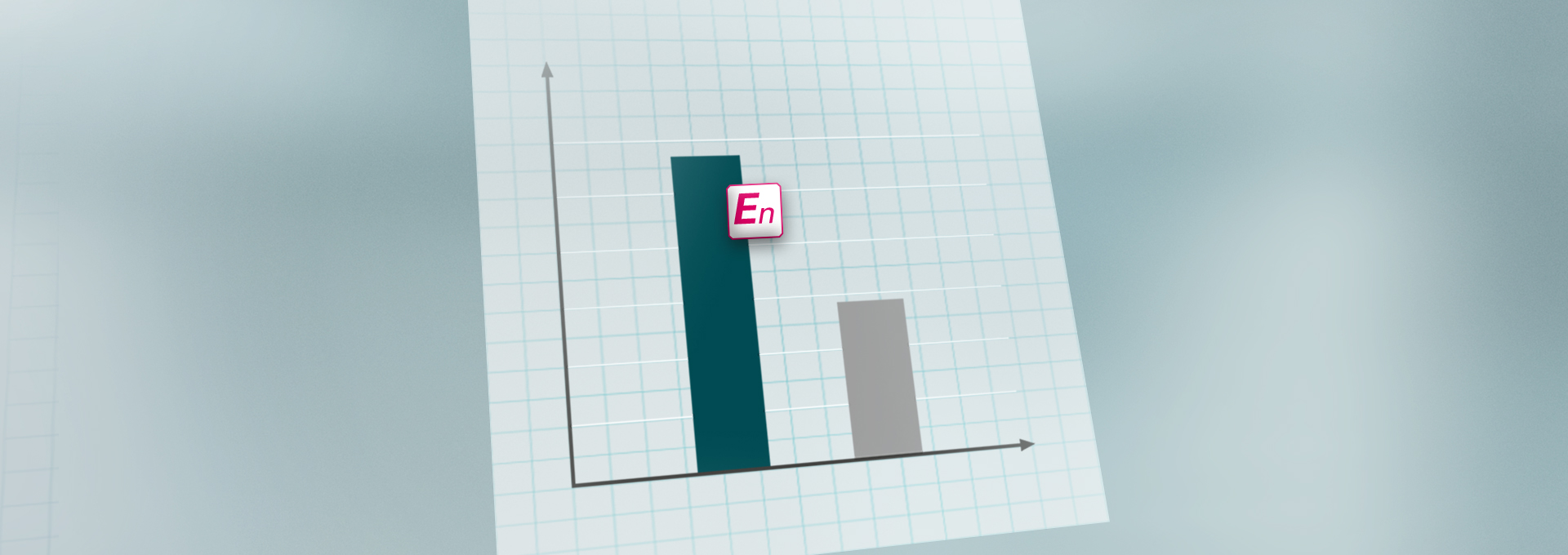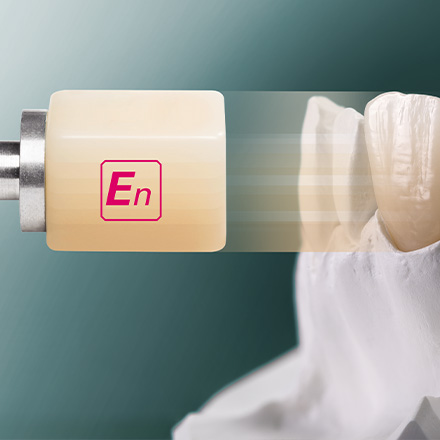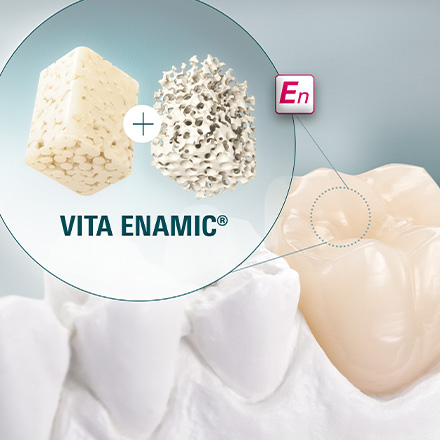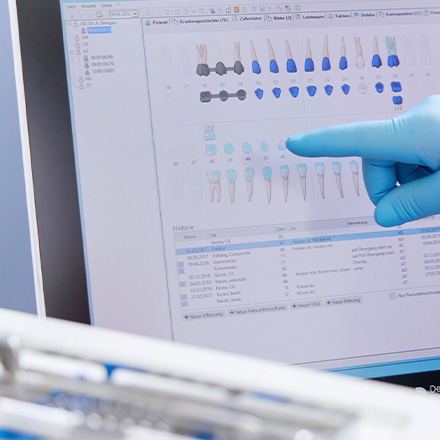In 2013, VITA ENAMIC, the world's first dental hybrid ceramic for the digital workflow was launched. Since that time, the material has been a focus of attention for international science. This is because the product is not composed of a common composite formulation where ground filling materials are mixed with a polymer. The hybrid ceramic is constructed from a unique dual network that consists of a porous, presintered compact feldspar ceramic block (86 wt.%) that is then infiltrated with a polymer (14 wt.%) under pressure and heat. This innovative structure results in several processing advantages, as well as tooth-like properties.
But what do independent studies say about VITA ENAMIC in clinical use?
The following information demonstrates the positive effects of the hybrid ceramic material on the patient's mouth.
Find out what researchers have discovered about the clinical use of VITA ENAMIC and what conclusions they draw from it.
The study results have been organized and summarized for you according to the indication investigated.




